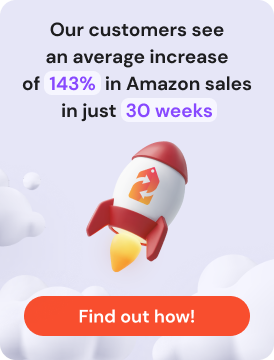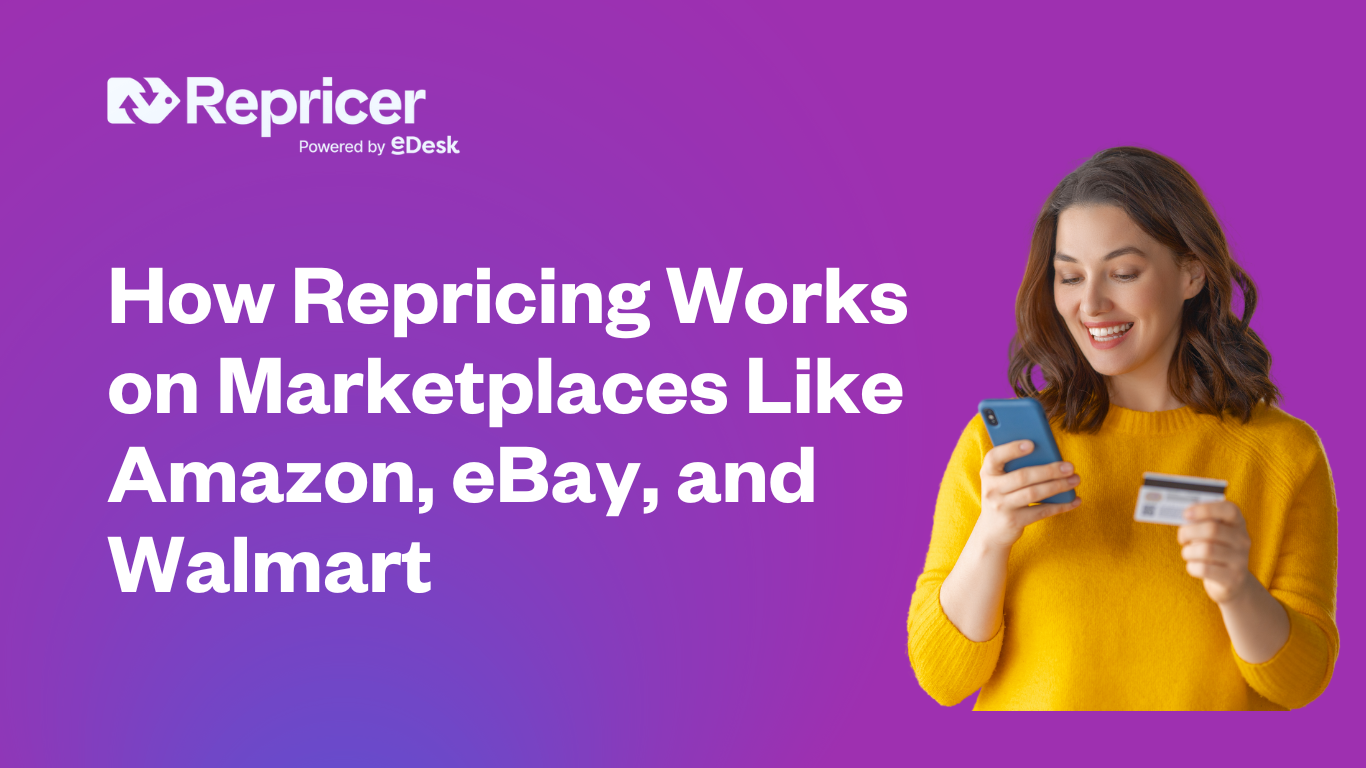Online retail sales in the USA increased by 16 percent to reach $453.5 billion in 2017, compared to in-store sales growth of just 3.4%, according to a U.S. Census Bureau report, proving once again that the future of e-commerce is bright.
Besides the faster growth, an e-commerce business has many inherent advantages over running a traditional brick-and-mortar store, including lower overhead costs, the potential to scale very quickly and the luxury of outsourcing tasks to contractors so you can run a million dollar one-person business.
But why isn’t everyone finding success in e-commerce? One reason is that running an online store requires a different mindset and habits than those needed to run a traditional offline business. Many business owners have a hard time when their mindsets may be stuck in the offline world.
In addition, some online sellers may be doing this as a side hustle while working a full-time job, even approaching this new entrepreneurial endeavor with the same mindset as their 9-to-5 job, which doesn’t work.
Rather than talk about the latest tactics and endless shiny new objects, I’d like to take a step back and take a deeper look at the habits of highly effective Amazon and e-commerce sellers.
Why habits?
Because tactics, the latest new tricks and worrying about the competition and Chinese sellers will only get you so far. It’s habits and principles that will set the foundation for a strong mindset and a strong business.
Based on my experience selling online since 2004, masterminding with other successful sellers, as well as studying highly effective leaders in the business world, I’ve distilled it down to the following six habits.
1. Start with the finish in mind
2. Be proactive
3. Prioritize your work
4. Done is better than perfect
5. Pivot like a top gun
6. Never stop learning
#1. Start with the finish in mind
Rather than jumping in and trying every new tactic, what’s your end goal?
Let’s say it’s to build a million-dollar business, which is great, but then what? What will you do with your 7-figure business and how will you run it?
No matter what your end goal is you first have to define it. This way you can then map out how to get there.
“Give me six hours to chop down a tree and I will spend the first four sharpening the axe.”
Abraham Lincoln
So the builder must define his goal first and then sharpen the axe before he begins to hack away at it.
The architect has a clear image in their head before they start the hard work of actually building it. They can clearly visualize what the end goal looks like. With that image in mind and the blueprint on paper, they can then take the steps to build that dream house.
The same is true with growing and scaling an e-commerce business.
Ask yourself these two questions:
- What is my end goal?
- Is what I’m doing now going to take me there?
Take a second and ask yourself: is the ladder you’re climbing now leaning against the wrong wall?
If so, you better get off and get on the right path to your goal.
#2. Be proactive
There are two types of people in this world: proactive and reactive.
Reactive people wait for things to happen and then passively respond to them. For example, if you have a SKU that is selling 10 units a day, your feedback is 4.0 stars and you feel like it’s good enough so you don’t do anything to improve it.
What happens to reactive people? The market is evolving while they are stagnating. Gradually more and more competitors will come into your niche until eventually the market becomes flooded. It becomes a price war. Your sales will plummet as a result.
Sales will drop from 10 sales per day to one or two. Your Best Sellers Rank (BSR) drops like a rock. Your listing is pushed off page 1 to page 6.
Then you try to improve your product until you realize it’s too late.
Stephen Covey, the author of The 7 Habits of Highly Effective People, said that reactive people “focus on the weakness of other people, the problems in the environment and circumstances over which they have no control. They focus results in blaming and accusing attitudes, reactive language and increased feelings of victimization.”
This reminds me of the complaints sellers have every day about Amazon raising its long-term storage fees, the marketplaces being too competitive because of Chinese sellers and changes to Brand Registry requirements.
You can moan about those factors all day long but can you do anything to change it? No. As a result, being reactive lowers your productivity.
Reactive people are focused on and concerned about things they cannot control and as a result, spend their energies on that rather than proactively working on the things that they can control to grow their business!
When faced with the same challenges, proactive people may say: Amazon is raising its long-term storage fees—what can I do to reduce my storage fees? Maybe it’s time to consider storing less inventory in Amazon’s expensive fulfillment centers and moving it to a third-party warehouse with lower storage fees.
Or how can I better forecast my inventory levels when I reorder so that I don’t keep so much excess in stock? Or maybe it’s time to cut my losses and liquidate this inventory so I can replenish my bestsellers to make me more money, a la the 80/20 rule. In other words, focus on the 20 percent of your products that generate 80 percent of your sales revenue.
Another trait of proactive e-commerce business owners is that they will build a moat around their business to protect it from competitors and reduce risks from external factors.
They will proactively review their customer comments (as well as their competitors’) to discover ways to improve their product and add value to it so that they maintain a high feedback review score of 4.5 stars and above.
Maybe they build a website to diversify their sales so they don’t keep all their eggs in one basket, in case one of their channels may suddenly close off someday, i.e. an Amazon suspension.
They may find ways to collect email addresses and build a relationship with their customers so they are loyal, repeat shoppers rather than one-off sales from Amazon.
I initially did this with my first e-commerce business back in 2005. I started on eBay selling women’s shoes and clothing. After learning the ropes, making mistakes and improving, I eventually became a power seller. I went to eBay Live and read all the books I could find about selling online and found a strategy that made sense: multichannel selling. So I created my own private-label website on Yahoo Shopping and drove Google ads to it. I started getting sales on my website and I was super happy.
Then Amazon opened up to third-party sellers and I began selling there as well. This was before Fulfillment by Amazon (FBA) and I was fulfilling all shipments myself using a tape gun, boxes from Uline and my trusty Zebra barcode printer. I remember making daily trips to my local post office and skipping the line and dropping off my packages directly at the loading dock.
But I digress. This is an example of being proactive and protecting your asset against the risk of putting all your eggs in one basket which we see so many Amazon sellers doing right now.
#3. Prioritize your work
Let’s face it—in this day and age we are bombarded from all directions by email, Facebook messages, Slack, Twitter, WeChat, this, that and the other thing.
How does an e-commerce seller manage to run an effective business?
They prioritize their work.
This can be done a number of ways but one effective way is to divide your tasks into four quadrants which you can label in a matrix with the following headings:
- Important
- Not important
- Urgent
- Not urgent
By doing this, the highly effective entrepreneur will instantly know where their tasks fall and decide how to take action on them.
They can also easily decide which tasks they should delegate.
For example, busy work such as answering routine customer service questions can be delegated to a virtual assistant or team member while you, the business owner, focus on ways to grow your business.
These can include making improvements to your product so you overcome your competition, planning your email marketing strategy so you can build a relationship with your customers and sell more to them and creating Facebook Messenger campaigns to automate customer service and save you time.
They also decide which tasks they can automate using software to save them time and money and which tasks they can ignore because they are not important and not urgent. We all have the same 168 hours a week and it’s up to us how to prioritize them so we can we most efficient.
The key is the quadrants they choose to focus the bulk of their time on will determine how effective and successful they are.
Now I have a question for you.
If there was one task that would make a huge impact on your life, what would that be? And how much time are you spending on that task per week?
#4. Done is better than perfect
Sometimes we can be perfectionists and try to make something the best we can before we launch it.
I know because that was me. I would constantly go back and try to perfect a product so it was 100 percent before I launched it. If the color was just a shade too bright on the fabric, I would tell the supplier to go back and re-dye it. This would delay the launch another two to three weeks. As a result, we missed out on the cutoff date for the holiday shopping season and we lost a ton of sales.
However, at the end of the day, we need to let the market (i.e. our customers) decide—with their wallets.
If we don’t ship we will never know—and the result is that we lose.
“Real artists ship.”
Steve Jobs
Steve Jobs was notorious for telling his employees to deliver a product to meet his expectations and to deliver it by the ship date.
It was under these constraints and pressures that the iPod, iPhone and iPad that you are using every day were created and shipped.
In fact, if we were to look back, the iPhone 4 had a critical problem with its antenna where if you made a call and cradled the phone with your left hand you would lose all reception and the call would drop. In other words, the iPhone 4 was a phone that couldn’t make reliable phone calls. I remember this very clearly because I owned one.
Now I’m not sure if Jobs knew about this design defect but he shipped the phone anyways and sold millions of iPhones. Later he pivoted and corrected this flaw in a genius way that not only kept most customers satisfied but loving Apple even more.
So the takeaway is that done is better than perfect. You don’t need a 100 percent perfect product before you launch. Rather than spending six months perfecting a product package and potentially missing out on hundreds or thousands of sales, release a minimum viable product or MVP.
Instead of spending months developing a fancy custom package in version 1.0 of your product, I recommend using the existing packaging with your supplier and have a designer quickly customize the design with your logo and information. This should take only a few days. You want to validate your idea first.
Build a good enough product and worry about the last mile after you launch and get real customer feedback. Maybe what you thought was a flaw isn’t a flaw at all in your customers’ eyes.
And take the feedback that they give you to improve your product in version 2.0.
#5. Pivot like a top gun
Going back to the iPhone 4’s problem with its antenna, Steve Jobs cleverly pivoted and offered a free “bumper” case to all customers. This not only solved the antenna problem but customers were ecstatic to get a free iPhone case. Somehow the act of receiving a free piece of rubber for my phone made up for the “defect.” In fact, I respected Apple even more because they gave me a case for free.
Lesson learned: pivot quickly like a top gun.
According to a study of Silicon Valley entrepreneurs, the businesses that survive and thrive are the ones that pivot and change their businesses quickly as the market changes.
“He who can handle the quickest rate of change survives.”
Lt. Colonel John Boyd
This concept is taken from jet fighter pilots and is called an OODA loop. OODA stands for:
- Observe
- Orient
- Decide
- Act
It’s a feedback loop where you first observe what is the problem.
Steve Jobs observed that a disproportionate number of customers complained about their iPhone 4 dropping calls. He probably compared the frequency of complaints to the older iPhone 1 and iPhone 3G complaint records as a benchmark.
Then he oriented Apple as a customer service-focused company by providing a free bumper to all customers who bought an iPhone 4. He probably consulted with his supply chain leader (Tim Cook) to find out the product costs and fulfillment costs to decide whether it was worthwhile. The product cost for this piece of rubber and to ship it would probably be far less than $1 per unit landed.
The alternative would be to recall the phones and replace them which would be much more costly than giving customers a piece of rubber.
Jobs being the master sales probably observed that the gift may bring more goodwill to Apple customers.
Next Steve Jobs decided to make the free replacement offer to customers and announced it publicly. Successful leaders make decisions quickly. They don’t dilly dally and procrastinate.
He then took action by allowing customers to pick up their free bumpers at their local Apple store. Notice he took this decision quickly which is another important mark of an OODA loop.
The shorter the loop the more likely you will survive.
Eighties movie fans will remember that in the movie “Top Gun,” fighter pilot Maverick reacted a lot faster than his opponents so he was able to outmaneuver them and blow them out of the sky. His OODA loop was short and he pivoted quickly.
His buddy Goose, on the other hand, cracked under pressure and was shot down. In other words, a long OODA loop meant that he wasn’t so lucky.
Imagine if Steve Jobs wavered on his decision. What would that say about his business prowess? And customers would continue to complain and probably return their phones. Also, this would have given competitors like Samsung a prime opportunity to step in and offer a better phone to steal market share away from Apple.
Jobs’ short OODA loop meant Apple came away from this “problem” with happy and loyal customers and staved off his competitors. Going back to my iPhone 4, after I got the free bumper, I continue using iPhones today!
The same OODA loop applies to e-commerce sellers. Many sellers get stuck with analysis paralysis. They can look at endless new products and not choose any. As a result, they get stuck and watch their competitors blow them by.
Imagine if you launched that product you were looking at a year ago. How much more in sales would you be selling now? $10,000? $25,000? $100,000?
If there are policy changes on Amazon’s side, what do you do? Complain in Facebook groups about how Amazon is stealing your money or do you pivot quickly so you can outmaneuver your competitors and thrive like Maverick?
Remember: observe, orient, decide and action.
#6. Never stop learning
How do you stay ahead? Do you attend conferences to learn from top speakers and be around like-minded people? Do you buy courses to learn and improve your skills? Or do you read books to broaden your knowledge? Maybe you attend masterminds to bring together skills, experiences and insights from different people and hold each other accountable as you track your improvement?
Regardless of what you do to stay ahead the common theme to succeed is this: never stop learning.
“Like rowing a boat upstream, if you stop moving forward you fall back.”
Chinese Proverb
I believe in the super competitive world of e-commerce this is truer now than ever. In 2017, an estimated 1 million new sellers registered to sell on Amazon.
And it’s not just people in your country. Sellers are joining from all over the world from the U.S. to the EU to Australia to China, the latter responsible for an estimated one-third of the newbies.
On the ground in China, Amazon even holds training events to help educate these new sellers. They get information straight from Amazon and many even get dedicated managers to help them get started.
Word on the street is that in certain parts of China like Shenzhen, everyone from barbers to taxi drivers is selling on Amazon. So what are you doing to stay ahead of your competitors?
As an Amazon FBA business owner who’s running a one-man or one-woman show, you might be working a full-time job in addition to your FBA business as a side hustle.
So time is your most precious resource.
You’ve probably watched Case Study, listened to countless Amazon gurus on podcasts and YouTube or taken courses like ASM (Amazon Selling Machine) so you have a basic level of knowledge.
You might have a couple of SKUs up and running. You may have up to $1,000 in sales a day from your one or two products.
Now your goal is to grow into a 7-figure business.
But wait. It’s not so easy to hit that monthly revenue goal.
You might be completely disorganized right now, contacting suppliers, trying to keep track of cash flow and forecasting when to reorder your products, running profitable pay-per-click campaigns, trying to figure out Facebook ads and influencer marketing and not having enough time to do everything.
So how do you plan to hit that goal?
“I hear and I forget. I see and I remember. I do and I understand.”
Confucius
Want to apply these habits to your business? Download a free worksheet here.
_______________________________________________________________________________
Repricer.com is the ultimate Amazon repricing software available, enabling you to react instantly to changes in the marketplace and stay ahead of your competitors. Start a free trial today and win the Buy Box.









